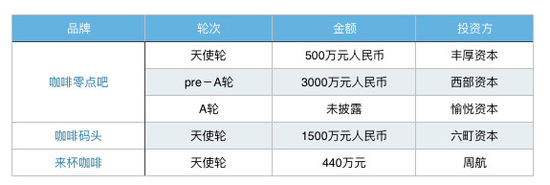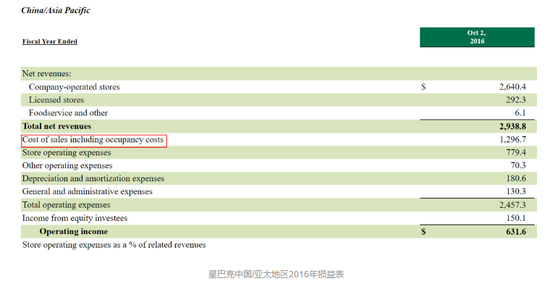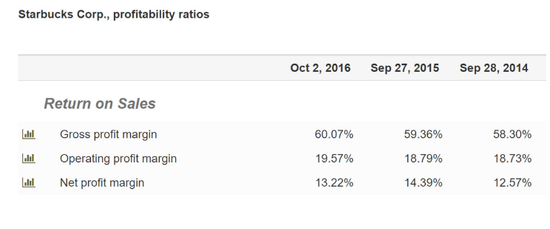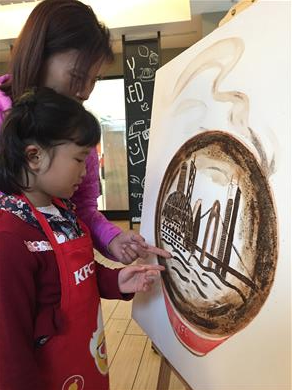How big is the business of trying to get a piece of Starbucks' coffee vending machine?

In January 2016, Starbucks from across the ocean opened its 2000th store in China. In the past 17 years, China has developed into its largest overseas market. Starbucks hopes to have 3400 stores in China by 2019.
Behind the rapid development of Starbucks is a quietly expanding Chinese coffee market.
According to industry data, the sales volume of China's coffee market reached 70 billion yuan in 2015, is expected to reach 300 billion in 2020, and is expected to exceed 1 trillion in 2025. According to the London International Coffee Organization, China's coffee market is growing at an annual rate of 15%, while the global market is growing at an average rate of 2%.
Currently, the proportion of instant, ready-to-drink and freshly ground coffee in the Chinese coffee market is about 7:2:1, while freshly ground coffee accounts for more than 87 per cent of total coffee consumption worldwide, according to Mintel, a consultancy. In the case of developed countries, when the per capita GDP and consumption level increase, people's preference for coffee will gradually shift from instant cafes to ready-to-drink. Yingminda expects the market share of instant coffee in China to fall to 66 per cent in 2019, with industry data saying that the proportion of instant, instant and freshly ground products will shift to 1:2:7. If coffee is as popular in China as the United States and Japan in the future, the optimistic market size should be 200 billion.
Foreign brands such as Starbucks and costa have gradually cultivated Chinese interest and dependence on coffee in more than a decade. However, traditional cafes have many problems, such as heavy asset structure, large upfront investment, high operating costs, long profit cycle and so on, which are not in line with the preference of VC. Only a few traditional coffee shop brands (such as Dior Coffee, Cross-Strait Coffee, etc.) have been invested.
On the contrary, in the field of grinding coffee, automatic coffee vending machines have gradually entered office buildings, university dormitories and other public places, and gradually began to get the attention of capital. At present, the existing brands of automatic coffee vending machines in China include Coffee Zero Bar, Coffee Wharf, Coffee, Grinding Donkey, friendly drink, friendly Coffee, and so on. Here are some publicly reported projects that have been financed:

Project financing of automatic coffee vending machine
At present, these projects are still in the early stage. Under the background that traditional instant coffee is gradually out of favor, can grinder automatic coffee vending machines blossom everywhere and what is the market concentration? We explore the matter in different dimensions, and by solving these two problems, we can answer whether the field is worth investing in.
one。 Market scale
Let's first take a look at the development of automatic coffee vending machines in developed countries:
Japan

Related data of Japanese beverage vending machine
According to the data given by the Japan Vending Machine Industry Association, by the end of 2015, the number of vending machines in Japan had reached 5 million, of which 2548700 were beverage vending machines, accounting for 51 percent, while the number of coffee vending machines (coffee & cocoa, cup type) reached 174000, accounting for about 3.5%. Based on the Japanese population of 127.3 million, there is one automatic coffee vending machine for every 7316 people.
America

Related data of American Beverage Vending Machine
According to the data given by vending news magazine, as of 2013, there were 267000 automatic coffee and beverage vending machines in the United States, accounting for 4.1% of the total. Among them, there are 246000 hot drinks and 21000 cold drinks. For every 1185 people in the United States, there is an automatic coffee and beverage vending machine for every 316.5 million people (2013).
According to the year-on-year point of view, the volume of coffee selling machines in the United States and Japan has been relatively stable, and there has been a slight decline, which can be used as a long-term benchmark.
According to the proportion of American vending machines (VEM) and convenience stores estimated at 30:1, there are about 90, 000 chain convenience stores in China (according to the China chain Management Association), and the number of domestic vending machines should be 2.7 million. According to the fact that coffee and beverages account for 3.5% of vending machines, 4% of coffee and beverages account for 4% of vending machines, there should be 100000 coffee and beverages in China. If the proportion of VEM/ convenience stores in Japan (75:1), there should be about 200000. On the premise of this assumption, with reference to the sales of 71.6 yuan in Japan and 15.7 billion yuan in the United States, the market size of Chinese coffee and beverages in vending machines should be about 10 billion.
However, according to the ratio of 40 people / Taiwan in the United States and 23 people / Taiwan in Japan, China's 4500 people / Taiwan is still in a state of low saturation, and the future development is still uncertain.
Let's estimate the market on the demand side:
Compared with instant and canned coffee, the quality of freshly ground coffee sold by automatic coffee vending machines is relatively better; compared with traditional cafes, automatic coffee vending machines save queuing time and are relatively efficient. The more value of traditional cafes lies in the "second leisure place", which meets people's leisure and social needs, while the automatic coffee vending machine meets that part of the pure desire for coffee, directly targeting the takeout market, which accounts for 35% of Starbucks' sales.
Compared to coffee shops, vending machines have the following advantages:
Convenient and efficient
Traditional coffee shop coffee time: order 1 minute + make coffee 45s + queue time. Vending machines take JVS APEX in Japan as an example, where the time to make a coffee drink is about between 10s~30s, plus ordering time and potential queuing time, which is more convenient than traditional coffee shops. In addition, traditional cafes have a limited range of radiation and cannot be laid out to every office building. The automatic coffee vending machine is small and can be placed in any space where it is needed.
Product standardization
Traditional cafes rely on the mode of manual + machine to complete the production of a cup of coffee, although consumables and proportions have fixed standards, but manual operation still can not ensure the quality. The coffee made by the automatic coffee machine, every link is completed by the machine, the product level is very stable.
User independent personalized customization
The automatic coffee vending machine can use the user's DIY mode. Users can set the ice degree, sweetness and cup shape of the drink according to their own needs, and the process of DIY can enhance the fun of consumption to a certain extent.
Flexible business model (proprietary, sales or leasing)
As a standard with less manual participation, the automatic coffee vending machine can join individuals without reducing the level of management. The existing domestic automatic coffee vending machine manufacturers also adopt the business model of leasing + buyout + self-management. The flexible business model breaks the limitations of traditional cafes in terms of expansion.
Low cost and large profit margin
The main costs of cafes are coffee raw materials, venue rent and manpower. The automatic coffee vending machine usually covers an area of less than 1 square meter, saving a lot of land rent costs. In addition to the labor maintenance costs of the coffee machine, the form of self-order and payment by users also saves the main labor costs. Industry data show that the cost of an automatic coffee vending machine ranges from 15, 000 to 30, 000 yuan.
As a result, the automatic coffee vending machine can take away part of the market where coffee shops and freshly ground consumption are consumed.
It is reported that the sales volume of Chinese chain coffee shops in 2015 was 27 billion yuan (of which Starbucks accounted for 12.23 billion yuan, or about 45%), including about 60 billion non-chain coffee shops. The market for take-out coffee vending machines (600-35% = 21 billion) + grinding (100% 10% = 1 billion) has a total of 22 billion, which should be reduced in view of the non-substitutability of the two.
From the above two analysis dimensions, the current target market scale of Chinese automatic coffee vending machine is 10 billion +.
In the long run, the potential consumption of freshly ground coffee in China is about 200 million. If the development reaches the expected level, the annual demand for 30 cups of coffee sold by automatic coffee vending machines per person per year will be 6 billion cups a year, with a unit price of 8 to 16 yuan and a market size of more than 50 billion.
In addition to the increment of the coffee demand market itself, the increasing land rent and labor costs are also further expanding the development space of vending machines as a retail form in China. With reference to the proportion of automatic coffee vending machines in developed countries and the number of coffee vending machines per capita, the number of domestic automatic coffee vending machines may reach 100000 in the future.
At present, there are less than 200000 vending machines in China, far from reaching saturation.
two。 Threshold
The concentration of this $10 billion market (whether there are big companies or not) depends on whether it has a high barrier to entry. We believe that the automatic coffee vending machine has barriers and barriers in brand, technology / commodity research and development, location, capital and so on, and there are strong economies of scale.
Brand: in the same way as Starbucks' advantage over Costa, consumers tend to choose ones with higher brand recognition when there are a lot of machines. When brand communication and membership system are in place, consumers will also have the psychology of social identity.
Technology / commodity R & D: compared with coffee beans with few purchasing channels, formula and process have a more important influence on the taste of coffee, including extraction, central control, foaming process, etc., while the communication interface behind it commands to control machinery, intelligent transmission, and interactive design. The leaders of this system can enjoy diminishing marginal costs.
Capital: the vending machine is an asset-heavy project, and enterprises with larger amounts of capital and more efficient utilization will have greater scale advantages.
Location: high-quality locations such as A-level office buildings and campuses have first-mover advantages, but it is not without space for newcomers to enter.
Coffee Zero Bar A round investor, pleasure Capital partner Dai Jie also believes that in the field of automatic coffee vending machines, the technology itself has formed a certain threshold. While putting together machines, companies should also pay attention to factors such as first-mover advantage, brand building, taste improvement, location consideration, actual operation and so on. To do this well, in the next few years, there may be 2-3 large companies in China's automatic coffee vending machine market, occupying the mainstream market share.
With reference to the Japanese market, there are already two big companies with a high market share:
JVS APEX

JVS APEX was founded in February 1963 with a registered capital of 84 million yen. At present, it has 1550 employees and an annual turnover of 60 billion yen. Mainly operated by automatic coffee vending machines, it has about 49000 cup coffee and beverage vending machines in 96 major cities in Japan, with a unit price of about 150,000,350 yen. There are 24000 canned beverage vending machines and 3000 other vending machines.
To buy coffee.

The company was founded in January 1970 with a registered capital of 15 million yen and currently has 420 employees and an annual turnover of 11.9 billion yen (including other businesses of the company, such as medical care). In March 1972, the company began to install automatic coffee vending machines in highway service areas and parking areas. At present, the automatic coffee vending machines occupy an absolute share in the SA and PA service areas of Japanese highways, as well as hospitals, office buildings and other places.
three。 Financial model
The automatic coffee vending machine has a better financial model and can recover the cost in half a year, which is also a key factor worthy of investment. The core is to save the high cost of land rent (reflected in the financial report Cost of sales including occupancy costs).

It can be seen that Starbucks' gross profit margin is stable at about 60%, which belongs to a high level, but once the rent-based expenses are deducted, the profit margin falls to about 13%, which shows the high cost.

four。 Trend judgment
The market still needs to be cultivated.
European and American countries consume about 500 cups of coffee per person per year, while Japan and South Korea consume 200 cups of coffee per person per year, while in China, the figure is only 4, which still takes some time to enter the education market. Given the 17% annual growth rate of freshly ground coffee, vending machines with good money should at least double their annual growth rate.
The layout is still dominated by schools and office buildings, which may extend to crowded scenes such as subway stations.
Although in addition to offices and schools, automatic coffee vending machines in developed countries will also be located in factories, highway service areas and other scenes, in China, as the future potential users are mainly students, office workers and other young groups, in the future, the locations of automatic coffee vending machines will mainly be schools and office buildings. Subway stations with a large number of office workers and large passenger flow may also become a reasonable place for the layout of automatic coffee vending machines. At the same time, the sale of coffee in the convenience store scene has been successfully verified by 7-11 and the whole family, and some emerging convenience stores are also ideal channels for vending machines.
Machine research and development, coffee quality and layout scale become the core competitive factors.
In the future, the competition between automatic coffee vending machines will largely focus on machine research and development, coffee quality and layout scale. Reduce machine costs and improve use efficiency, objectively create more profit space. The company needs to make further research and development in the selection of coffee raw materials and coffee formula. In terms of layout scale, companies that first occupy the market and put in more machines, not only enjoy the advantage of scale, but also objectively form a certain information and brand advantage.
Expanded category
Vending machines naturally have channel properties. Under the premise of mature technology, coffee machines can also expand other beverage categories and further increase order density.
In addition, when we discuss various forms of offline self-service products on the current market, Dai believes that to judge whether a self-service machine product can become bigger, first of all, it depends on whether the gross margin is high enough; secondly, whether the brand of the project is attractive enough, it has a strong memory effect for users to remember, and then consume; thirdly, the product should be developed independently, with a certain technical threshold. Finally, it depends on whether the product is connected to the Internet and whether it improves the efficiency through networking.
five。 Risk
Demand, demand or demand, coffee is a petty-bourgeois consumer category, targeting the middle class and students, but can the automatic coffee vending machine open the hearts of those who pay attention to section (b) (ge)? How much business can be taken away from the blooming cafes in terms of convenience and taste? These are unknowns.
At the same time, as mentioned earlier, the vending machine is an asset-heavy business, and Youbao, the channel leader, has been focusing on capital and burning money for many years, and the coffee vending machine still needs to solve the problem of how to replicate quickly in a lighter mode.
As for the metaphysics of taste, when it comes to the coffee vending machine business, I think "not bad" is more important than "good".
Important Notice :
前街咖啡 FrontStreet Coffee has moved to new addredd:
FrontStreet Coffee Address: 315,Donghua East Road,GuangZhou
Tel:020 38364473
- Prev

The cross-border logistics line in Southeast Asia helps Chongqing, which does not produce coffee, to set up a coffee trading center.
Although Chongqing is not a traditional coffee planting base, it is adjacent to Yunnan, the largest coffee producing area in the country, and is also at the intersection of Belt and Road Initiative and the Yangtze River economic belt. Chongqing also has three major transportation hubs of water transport, railway and air transportation, as well as three first-class ports and bonded areas. as well as the China-Europe-Chongqing New Europe train directly to Duisburg, Germany, especially the special cross-border logistics line to Southeast Asia, which helps to speed up
- Next

The humble coffee grounds outline the landmarks of Guangzhou
Coffee grounds can also be turned into treasures. There are more and more coffee shops in Guangzhou, which produce a lot of coffee grounds every day. Have you ever thought about how to use them? The original inconspicuous coffee grounds can plant green plants, clean and greasy, beauty and beauty, painting specimens and so on. Today, in the amalgamation program held by Guangzhou Urban Management Committee, Youth League Municipal Committee, Guangdong KFC and other units, we invited
Related
- Why are the coffee in some coffee shops not enough after being frozen? What should I make up for my American latte cappuccino coffee after being frozen?
- How much water does it take to steam coffee by hand? Why is the coffee brewing and steaming time 30 seconds? What is the purpose of steaming coffee?
- The suspected drink contains too much caffeine! Overlord Tea Lady responds urgently!
- Starbucks rejects antique paper coupons?! Netizen: Missed marketing opportunities!
- What ratio of water temperature and ground does the smart cup method use to press coffee? The difference between brewed coffee and filtered coffee?
- What is the standard process for the purpose of coffee cup testing? What is the difference between hand-brewed coffee and cup testing?
- How to use hand-brewed coffee paragon small golden balls? How does cold coffee lock in the aroma of coffee?
- Is American coffee black? What is the difference between American coffee and drip coffee?
- Unexpected! Well-known tea beverage brand Lele Tea will withdraw from the Zhengzhou market!
- Starbucks enters the fashion and beauty industry?! Netizen: Give me an ice American eye cream

